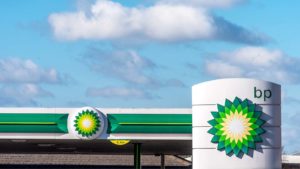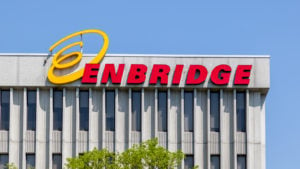2020 has definitely been a roller coaster for oil stocks. The novel coronavirus has resulted in steep declines in demand, leading OPEC to drastically reduce production.
While all this was going on, there was a point when crude oil dropped well below zero! It was, well, jaw dropping.
But during the past couple months, the situation has stabilized. Production cuts have been mostly effective. There has also been steadily rising demand, especially in China. As a result, Brent crude is now trading at $43 a barrel and West Texas Intermediate is at $41.
So there are currently value opportunities in these 7 oil stocks to buy:
- Exxon Mobil (NYSE:XOM)
- Chevron (NYSE:CVX)
- Royal Dutch Shell (NYSE:RDS.B)
- BP (NYSE:BP)
- ConocoPhillips (NYSE:COP)
- Enbridge (NYSE:ENB)
- Valero Energy (NYSE:VLO)
It’s important to note volatility will remain. With the coronavirus case numbers increasing in the U.S. again, this will be a drag on growth. But these stocks offer solid dividend yields to offset that risk.
Oil Stocks To Watch: Exxon Mobil (XOM)

Exxon Mobil’s roots go back to the 1870s, when the legendary John D. Rockefeller created Standard Oil. He was a relentless competitor and created a highly efficient organization. And this approach has continued until present day. It’s part of the company’s DNA.
Consider the following: XOM’s $610 million loss for the first quarter was the first in three decades!
Granted, the next quarter will also likely be depressed. But XOM management has been taking swift action to restructure the operations. To this end, the company has announced the slashing of 30% of the capital budget for this year.
Like many other oil stocks, XOM has rallied off its March low of $31. The gain is about 45%. Although, XOM stock is still off 35% from the start of the year.
For patient investors, XOM does look interesting, though — especially for those with a long-term perspective. Given the company’s scale and resources, it should be able to grow again but also benefit from the consolidation opportunities in the industry.
Chevron (CVX)

One of the big fears investors have with oil stocks is a paring back or elimination of dividend payouts. We’ve already seen various large companies take such actions.
But as for CVX, the company is determined to hold the line. In March, CEO Michael Wirth said on CNBC:
“Our dividend is our number one priority and it’s very secure. We’re taking actions to preserve cash. It will have some impact on production in the near term, but we’ve stayed with our financial priorities, which include protecting the dividend.”
The current yield on CVX stock is a juicy 6.24%. The last time there was a cut in the dividend was back in 1934, when the U.S. economy was mired in the Great Depression.
For the most part, CVX is one of the better positioned major oil operators. The balance sheet is in pretty good shape, with a net-debt ratio around 13% assuming Brent trades at an average of $30 this year.
The company also started restructuring its operations last year. Of course, the efforts have since accelerated. The plan is for capital expenditures of $14 billion this year, down from the original forecast of $20 billion. There will also be a reduction of $1 billion from operating costs.
Royal Dutch Shell (RDS.B)

For Royal Dutch Shell, dividend increases had become automatic. But this changed abruptly with the coronavirus. For the first time since World War II, the company reduced its dividend payout.
But this was a good move. And even after the cut, RDS stock continues to yield an attractive 4.3%.
Then what about the second quarter? Well, the company has provided some guidance — and it’s far from good. The expectation is that there will be a write down of between $15 billion to $22 billion.
But this may ultimately be overly conservative (the assumption is for Brent Crude to average $35 for the rest of the year and go to $60 by 2023). In other words, as oil prices continue stabilize, there should be notable improvements in the bottom line as well as better quarterly comparisons.
BP (BP)

Headed into 2020, prospects for BP looked promising. The company appeared to have mostly dealt with the horrible impact of the Deepwater Horizon disaster and the tough restructuring was showing encouraging results.
But unfortunately, the novel coronavirus turned the situation for BP stock very negative again. In March, shares hit levels unseen since the mid-1990s.
Perhaps then BP is a value play? Maybe. But it could take awhile for there to be a recovery in the stock price.
But the key here is really the dividend yield, which is at 10.5%. True, the company has had to load up the balance sheet with more debt for this. But it helps that the markets are robust and rates are at rock-bottom levels.
Thus BP could remain attractive from a yield perspective, at least for the next few years.
ConocoPhillips (COP)

ConocoPhillips has a diverse platform which includes the production and marketing of crude oil, bitumen, natural gas, natural gas liquids and liquefied natural gas. The company has operations across 17 countries.
Consider that COP has a history of being conservative with its growth and spending. As a result, the balance sheet is not overburdened with debt. That being said, the company has still been aggressive with its cost cutting in response to coronavirus.
The end-game though for COP stock may ultimately be to sell out to a mega oil operator. The market cap is a reasonable $42 billion. All in all, a buyout would be an efficient way to get access to a large amount of reserves (at 5.3 billion barrels of oil equivalent).
Finally, the dividend yield is attractive, at about 4.23%.
Enbridge (ENB)

Enbridge, which is based in Canada, operates a large network of pipelines for natural gas and petroleum. Consider that about two-thirds of the country’s exports to the U.S. are through this system. The company has also been making long-range investments in renewables, such as with the development of offshore wind properties.
The interesting part of this company’s business is that coronavirus isn’t expected to negatively impact cash flows. Why? The main reason is that Enbridge gets paid regardless of the usage.
Now the company certainly does face some challenges. For example, Enbridge recently was required to close a pipeline because of an adverse court ruling. However, the company does have recourse. And besides, even if the pipeline must be shut down permanently, it will only impact 5% of the earnings.
Enbridge also sports a dividend yield of nearly 8%. In fact, the company has a record of increasing the payout for the past 25 years.
Valero Energy (VLO)

Valero Energy is a leading petroleum refiner, with a capacity of about 3.2 million barrels per day. There are also 14 ethanol plants that produces 1.73 billion gallons per year. Note that the company markets its products extensively in the US and Canada, as well as in the U.K, Ireland and parts of Latin America.
The oil glut isn’t necessarily a problem for VLO stock. The reason: the company makes money based on the spread on oil and gasoline and heating oil prices, although, overall demand for gasoline is still important.
But ultimately, VLO may be buyout bait. This company could provide nice diversification for a major oil operator.
In the meantime, VLO stock is paying a competitive dividend, which is at 7.21%.
Tom Taulli (@ttaulli) is an advisor and author of various books and online courses about technology, including Artificial Intelligence Basics, The Robotic Process Automation Handbook and Learn Python Super Fast. He is also the founder of WebIPO, which was one of the first platforms for public offerings during the 1990s. As of this writing, he did not hold a position in any of the aforementioned securities.
